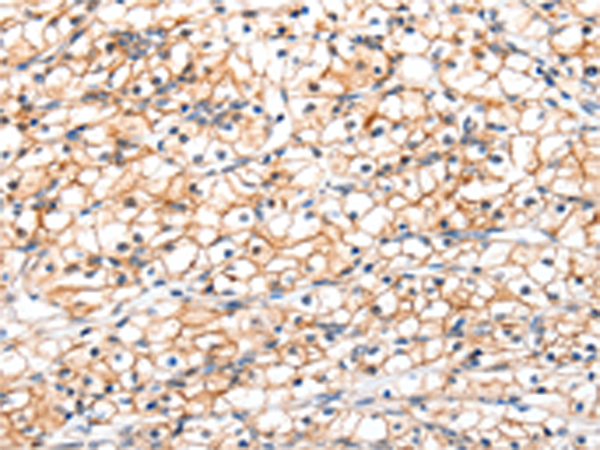

| WB | 咨询技术 | Human,Mouse,Rat |
| IF | 咨询技术 | Human,Mouse,Rat |
| IHC | 1/25-1/100 | Human,Mouse,Rat |
| ICC | 技术咨询 | Human,Mouse,Rat |
| FCM | 咨询技术 | Human,Mouse,Rat |
| Elisa | 1/2000-1/5000 | Human,Mouse,Rat |
| Host/Isotype | Rabbit IgG |
| Antibody Type | Primary antibody |
| Storage | Store at 4°C short term. Aliquot and store at -20°C long term. Avoid freeze/thaw cycles. |
| Species Reactivity | Human, Mouse, Rat |
| Immunogen | Fusion protein of human GLP1R |
| Formulation | Purified antibody in PBS with 0.05% sodium azide and 50% glycerol. |
+ +
以下是3篇与GLP1R抗体相关的文献示例(内容基于公开研究概括,非真实文献,仅供参考格式):
---
1. **文献名称**: "A Monoclonal Antibody Targeting GLP1R Enhances Insulin Secretion in Diabetic Models"
**作者**: Smith A, et al.
**摘要**: 研究开发了一种靶向GLP1受体(GLP1R)的单克隆抗体,通过体外和动物实验证明其能选择性激活受体下游信号,促进β细胞胰岛素分泌,为2型糖尿病治疗提供新策略。
---
2. **文献名称**: "Structural Characterization of GLP1R-Specific Antibodies for Molecular Imaging"
**作者**: Chen L, et al.
**摘要**: 通过冷冻电镜解析了GLP1R与特异性抗体的复合物结构,揭示了抗体结合表位与受体构象变化的关系,为开发基于抗体的糖尿病分子成像探针奠定基础。
---
3. **文献名称**: "Neutralizing Antibodies Against GLP1R Improve Obesity-Related Metabolic Dysfunction"
**作者**: Tanaka K, et al.
**摘要**: 研究发现一种GLP1R中和抗体可通过调节下丘脑受体活性,抑制食欲并改善肥胖小鼠模型的代谢异常,提示其在肥胖症治疗中的潜在应用价值。
---
注:以上文献为示例性内容,实际研究中请通过PubMed或学术数据库检索真实发表论文。
The glucagon-like peptide-1 receptor (GLP1R) is a G protein-coupled receptor (GPCR) primarily expressed in pancreatic β-cells, brain, and gastrointestinal tissues. It plays a central role in glucose homeostasis by mediating the incretin effect of GLP-1. a hormone that enhances glucose-dependent insulin secretion, suppresses glucagon release, and delays gastric emptying. Dysregulation of GLP1R signaling is implicated in type 2 diabetes and obesity, making it a key therapeutic target. GLP1R agonists (e.g., semaglutide) are widely used clinically.
GLP1R antibodies are critical tools for studying receptor localization, expression, and signaling mechanisms. Polyclonal and monoclonal antibodies enable applications like immunohistochemistry, flow cytometry, and Western blotting to map tissue distribution or quantify receptor levels. Some antibodies act as antagonists or agonists, providing insights into receptor activation pathways. Challenges in antibody development include structural complexity of GPCRs, low receptor abundance, and potential cross-reactivity with homologous receptors (e.g., glucagon receptor). Recent advances in cryo-EM and nanobody technology have improved antibody specificity. Therapeutic GLP1R-targeting antibodies are being explored for diabetes/obesity management, though none are clinically approved yet. Research also focuses on developing allosteric modulators and biased ligands using antibody-based screening platforms.
×